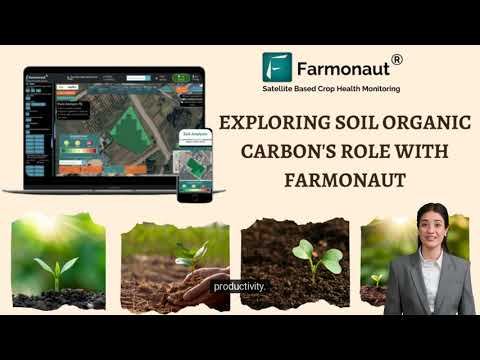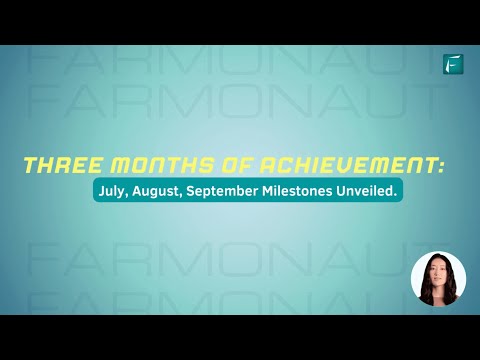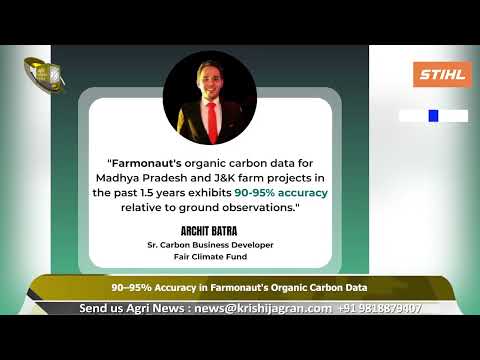Breakthrough in Quebec: Wollastonite Mining Revolutionizes Carbon Removal and Sustainable Agriculture
“Wollastonite weathers up to 10 times faster than similar minerals, making it exceptional for carbon capture and storage.”
In the ever-evolving landscape of climate change mitigation and sustainable agriculture, a groundbreaking development has emerged from the heart of Quebec, Canada. The province’s wollastonite mining industry is poised to revolutionize carbon removal techniques and agricultural practices, offering a beacon of hope in our ongoing battle against rising atmospheric CO2 levels. As we delve into this exciting breakthrough, we’ll explore how enhanced rock weathering for carbon removal is gaining significant traction, and why wollastonite is at the forefront of this innovative approach.
The Quebec Wollastonite Discovery: A Game-Changer in Carbon Sequestration
On January 30, 2025, Vertical Exploration Inc. (TSX-V:VERT) made a significant announcement that has sent ripples through the mining and environmental sectors. The company extended its exclusivity agreement with an undisclosed international entity regarding its St-Onge Wollastonite deposit in Quebec. This development follows their previous announcement on October 24, 2024, and signals a promising future for wollastonite mining in the region.
The focus of this agreement is on exploring applications for enhanced rock weathering (ERW) as a method for carbon removal. While the identity of the international entity remains under wraps, the potential benefits of wollastonite in this context are already clear and exciting.
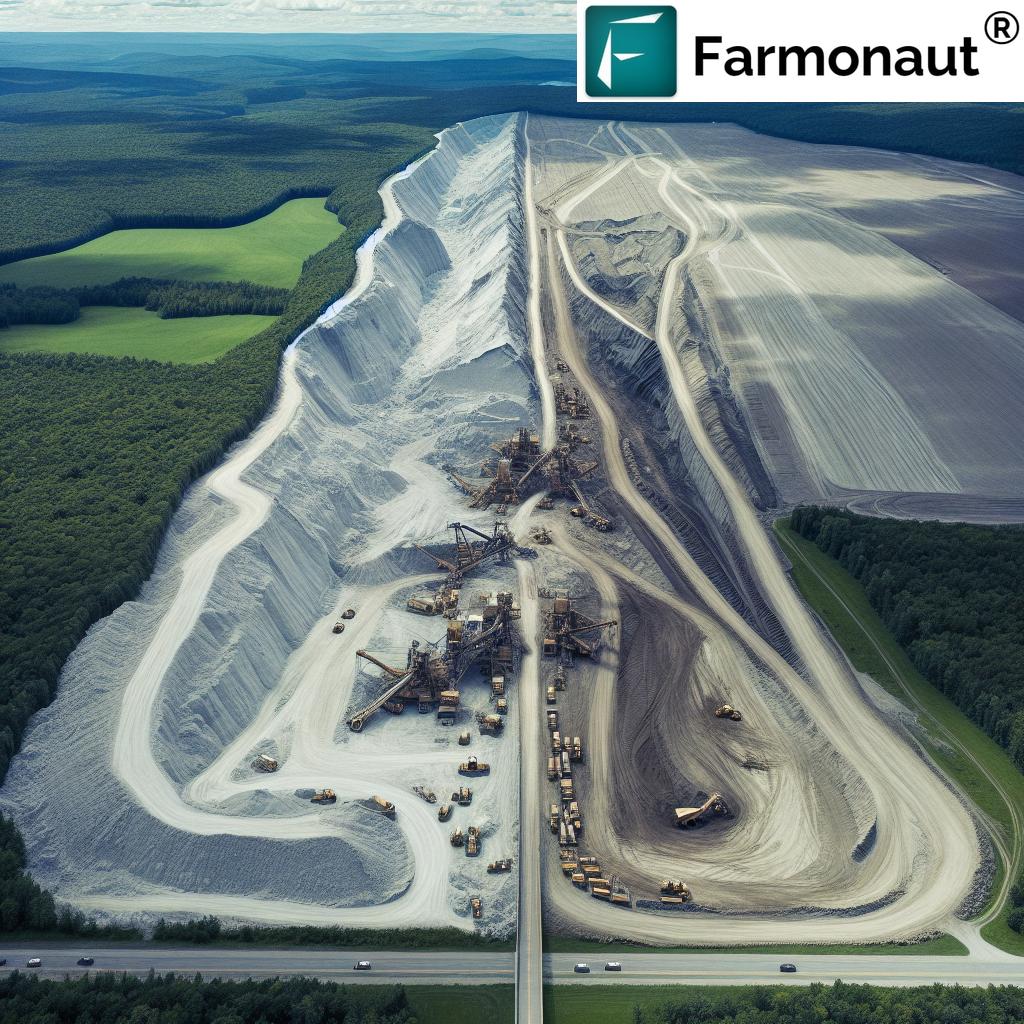
Understanding Wollastonite: The Mineral Marvel
Wollastonite, a calcium inosilicate mineral (CaSiO3), is emerging as a powerhouse in the realm of carbon capture and storage. Its unique properties make it an exceptional candidate for absorbing and permanently storing atmospheric carbon dioxide. But what sets wollastonite apart from other silicate minerals?
- Rapid Weathering: Wollastonite weathers up to ten times faster than similar silicate minerals, accelerating the carbon capture process.
- Nutrient Release: As it weathers, wollastonite releases essential nutrients like calcium, magnesium, and silicon into the soil.
- Soil Enhancement: These released nutrients improve soil pH, boost crop yields, and enhance pest resistance.
- Dual Benefit: Wollastonite not only sequesters carbon but also improves agricultural productivity.
The discovery and potential large-scale mining of wollastonite in Quebec represent a significant leap forward in our arsenal against climate change. It’s a prime example of how enhanced weathering techniques are shaping the future of sustainable agriculture and climate mitigation strategies.
The Science Behind Enhanced Rock Weathering (ERW)
Enhanced rock weathering is a natural process that has been occurring on Earth for millions of years. However, scientists and environmentalists are now looking at ways to accelerate this process to combat rising CO2 levels. Here’s how it works:
- Rock Crushing: Wollastonite is mined and crushed into fine particles, increasing its surface area.
- Application to Soil: The crushed mineral is spread over agricultural land or other suitable areas.
- Chemical Reaction: As rain falls, it reacts with the wollastonite, dissolving CO2 from the air.
- Carbon Sequestration: The dissolved CO2 forms bicarbonate ions, which are eventually washed into the oceans and stored long-term.
This process not only removes carbon from the atmosphere but also provides additional benefits to the soil and crops. It’s a win-win situation for both climate action and agriculture.
Agricultural Benefits of Wollastonite: Beyond Carbon Capture
While the carbon sequestration potential of wollastonite is impressive, its benefits to agriculture are equally noteworthy. Farmers stand to gain significantly from the application of this mineral to their soils:
- Improved Soil pH: Wollastonite helps balance soil acidity, creating optimal conditions for crop growth.
- Enhanced Nutrient Availability: The release of calcium, magnesium, and silicon improves nutrient uptake by plants.
- Increased Crop Yields: Studies have shown significant increases in crop productivity with wollastonite application.
- Better Pest Resistance: Silicon released by wollastonite strengthens plant cell walls, improving resistance to pests and diseases.
- Soil Structure Improvement: The mineral helps in creating a better soil structure, enhancing water retention and reducing erosion.
“Quebec’s wollastonite mining breakthrough could revolutionize sustainable agriculture and CO2 sequestration efforts in North America.”
These agricultural benefits make wollastonite an attractive option for farmers looking to improve their yields while contributing to climate change mitigation efforts.
Comparing Wollastonite-Enhanced Agriculture with Traditional Practices
To better understand the impact of wollastonite on agriculture, let’s compare it with traditional agricultural practices:
| Attribute | Wollastonite-Enhanced Agriculture | Traditional Agriculture |
|---|---|---|
| Carbon Sequestration Potential (estimated tons CO2/hectare/year) | 10-20 | 0-2 |
| Soil pH Improvement (scale of 1-10) | 8 | 3 |
| Crop Yield Increase (estimated percentage) | 15-30% | Baseline |
| Pest Resistance Enhancement (scale of 1-10) | 7 | 4 |
| Soil Health Improvement (scale of 1-10) | 9 | 5 |
| Mineral Release (estimated kg/hectare/year for calcium, magnesium, and silicon) | 500-1000 | 50-100 |
| Long-term Sustainability (scale of 1-10) | 9 | 6 |
This comparison clearly illustrates the significant advantages of incorporating wollastonite into agricultural practices, especially in terms of carbon sequestration and overall soil health improvement.
The Role of Technology in Wollastonite-Enhanced Agriculture
As we embrace this new era of wollastonite-enhanced agriculture, technology plays a crucial role in maximizing its benefits. Advanced agricultural technologies can help farmers optimize the use of wollastonite and monitor its effects on their crops and soil health.
One such technological solution is provided by Farmonaut, a pioneering agricultural technology company. Farmonaut offers advanced, satellite-based farm management solutions that can be particularly beneficial for farmers adopting wollastonite-enhanced practices.
Through its web application, Android app, and iOS app, Farmonaut provides real-time crop health monitoring, AI-based advisory systems, and resource management tools. These features can help farmers:
- Monitor the effects of wollastonite application on crop health using multispectral satellite imagery
- Optimize the timing and quantity of wollastonite application based on soil and crop conditions
- Track improvements in soil health and crop yields over time
- Make data-driven decisions to maximize the benefits of wollastonite-enhanced agriculture
For developers and businesses looking to integrate these capabilities into their own systems, Farmonaut also offers an API with comprehensive documentation.
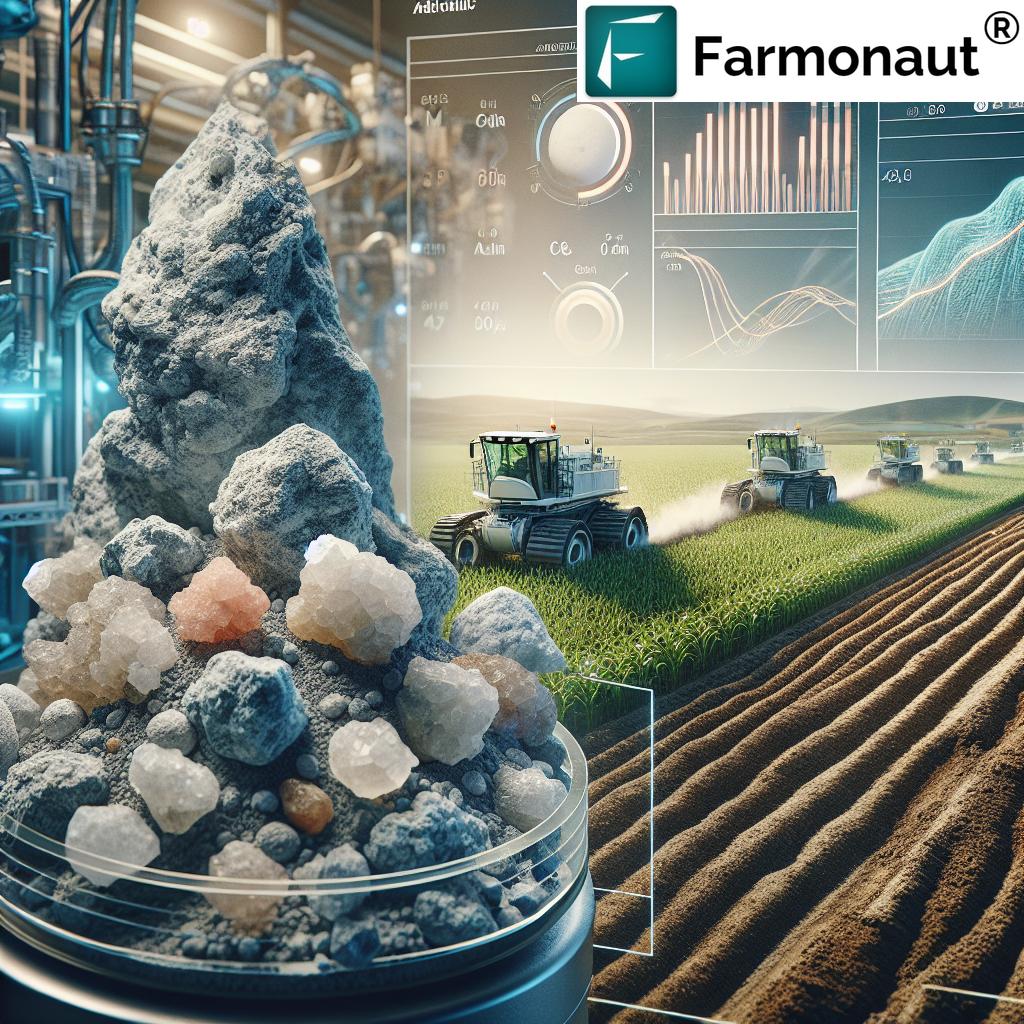
The Future of Wollastonite Mining in North America
The developments in Quebec’s wollastonite mining sector are just the beginning. As North American mining prospects evolve, we’re likely to see an increased focus on mineral applications for atmospheric carbon absorption. This shift could lead to:
- Expansion of wollastonite mining operations across suitable regions in North America
- Increased research and development in enhanced weathering techniques
- Collaboration between mining companies, agricultural sectors, and climate scientists
- Policy changes to incentivize the use of wollastonite in agriculture for carbon sequestration
- Integration of wollastonite-based strategies into national and international climate action plans
The potential for wollastonite to revolutionize both carbon removal efforts and sustainable agriculture practices is immense. As we continue to explore and develop this resource, we may be looking at a significant leap forward in our fight against climate change.
Challenges and Considerations
While the prospects of wollastonite mining for carbon removal and agricultural enhancement are exciting, it’s important to consider potential challenges:
- Environmental Impact of Mining: Ensuring that wollastonite extraction is done sustainably and with minimal environmental impact is crucial.
- Transportation and Distribution: Efficient systems for transporting and distributing wollastonite to agricultural areas need to be developed.
- Education and Adoption: Farmers and agricultural stakeholders need to be educated about the benefits and proper use of wollastonite.
- Long-term Effects: Continued research is needed to fully understand the long-term effects of large-scale wollastonite application on ecosystems.
- Economic Viability: The cost-effectiveness of wollastonite mining and application needs to be ensured for widespread adoption.
Addressing these challenges will be key to realizing the full potential of wollastonite in our climate and agricultural strategies.
The Role of Technology in Optimizing Wollastonite Use
As we embrace wollastonite-enhanced agriculture, technology plays a crucial role in maximizing its benefits. Advanced agricultural technologies can help farmers optimize the use of wollastonite and monitor its effects on their crops and soil health.
Farmonaut, a pioneering agricultural technology company, offers solutions that can be particularly beneficial for farmers adopting wollastonite-enhanced practices. Through its satellite-based farm management platform, Farmonaut provides:
- Real-time crop health monitoring using multispectral satellite imagery
- AI-based advisory systems for optimized resource management
- Tools to track improvements in soil health and crop yields over time
These technologies enable farmers to make data-driven decisions, ensuring they get the most out of wollastonite application while contributing to carbon sequestration efforts.
Global Implications and Future Outlook
The breakthrough in Quebec’s wollastonite mining has implications that extend far beyond the borders of Canada. As the world grapples with the urgent need to reduce atmospheric CO2 levels, the potential of enhanced rock weathering using wollastonite offers a ray of hope. Here’s how this development could impact global efforts:
- Scaling Up Carbon Removal: If successful, the Quebec model could be replicated in other wollastonite-rich regions worldwide, significantly scaling up our carbon removal capabilities.
- Agricultural Revolution: The dual benefit of carbon sequestration and improved crop yields could transform agricultural practices globally, especially in regions struggling with soil fertility.
- Economic Opportunities: The wollastonite mining industry could create new economic opportunities, from mining jobs to the development of new technologies for application and monitoring.
- International Collaboration: This breakthrough could spark increased international collaboration in climate change mitigation efforts, with countries sharing knowledge and resources.
- Policy Changes: Successful implementation could lead to policy changes at national and international levels, potentially including wollastonite-based strategies in carbon credit systems.
As we look to the future, the potential of wollastonite in addressing both climate change and food security challenges is immense. However, realizing this potential will require continued research, investment, and collaboration across sectors and borders.
Conclusion: A New Chapter in Climate Action and Sustainable Agriculture
The breakthrough in Quebec’s wollastonite mining marks the beginning of an exciting new chapter in our ongoing efforts to combat climate change and promote sustainable agriculture. By harnessing the power of this remarkable mineral, we have the opportunity to make significant strides in carbon removal while simultaneously enhancing agricultural productivity.
As we move forward, it will be crucial to:
- Continue research and development in wollastonite applications
- Foster collaboration between mining companies, agricultural sectors, and climate scientists
- Develop policies that support and incentivize the use of wollastonite for carbon sequestration
- Educate farmers and the public about the benefits of wollastonite-enhanced agriculture
- Monitor and address any potential environmental impacts of increased wollastonite mining
The road ahead is challenging, but the potential rewards are immense. With continued dedication, innovation, and collaboration, wollastonite mining could indeed revolutionize our approach to carbon removal and sustainable agriculture, paving the way for a more sustainable and food-secure future.
FAQs
- Q: What is wollastonite?
A: Wollastonite is a calcium inosilicate mineral (CaSiO3) that has unique properties making it excellent for carbon capture and storage, as well as improving soil health. - Q: How does wollastonite help in carbon sequestration?
A: Wollastonite weathers rapidly when exposed to rainwater and CO2, forming bicarbonate ions that eventually get stored in oceans, effectively removing carbon from the atmosphere. - Q: What are the agricultural benefits of using wollastonite?
A: Wollastonite improves soil pH, enhances nutrient availability, increases crop yields, improves pest resistance, and enhances overall soil health. - Q: How much faster does wollastonite weather compared to other minerals?
A: Wollastonite weathers up to ten times faster than similar silicate minerals, making it exceptionally effective for carbon capture. - Q: Is wollastonite mining environmentally friendly?
A: While mining has environmental impacts, the long-term benefits of wollastonite in carbon sequestration and sustainable agriculture can outweigh these impacts if managed responsibly. - Q: How can farmers monitor the effects of wollastonite on their crops?
A: Farmers can use advanced agricultural technologies like Farmonaut’s satellite-based monitoring systems to track crop health, soil conditions, and the effects of wollastonite application. - Q: Is wollastonite-enhanced agriculture economically viable for farmers?
A: While initial costs may be involved, the long-term benefits of improved soil health and increased crop yields can make wollastonite-enhanced agriculture economically beneficial for farmers. - Q: Can wollastonite be used in all types of agriculture?
A: Wollastonite can benefit many types of agriculture, but its effectiveness may vary depending on soil type, crop type, and local climate conditions. Consultation with agricultural experts is recommended. - Q: How does enhanced rock weathering compare to other carbon removal techniques?
A: Enhanced rock weathering, especially using wollastonite, is considered a promising carbon removal technique due to its additional agricultural benefits and relatively low environmental impact compared to some other methods. - Q: What role can technology play in optimizing wollastonite use in agriculture?
A: Technologies like satellite imaging, AI-driven advisory systems, and precision agriculture tools can help farmers optimize wollastonite application, monitor its effects, and maximize its benefits for both carbon sequestration and crop yield.
Earn With Farmonaut
Earn 20% recurring commission with Farmonaut’s affiliate program by sharing your promo code and helping farmers save 10%. Onboard 10 Elite farmers monthly to earn a minimum of $148,000 annually—start now and grow your income!
Farmonaut Subscriptions




